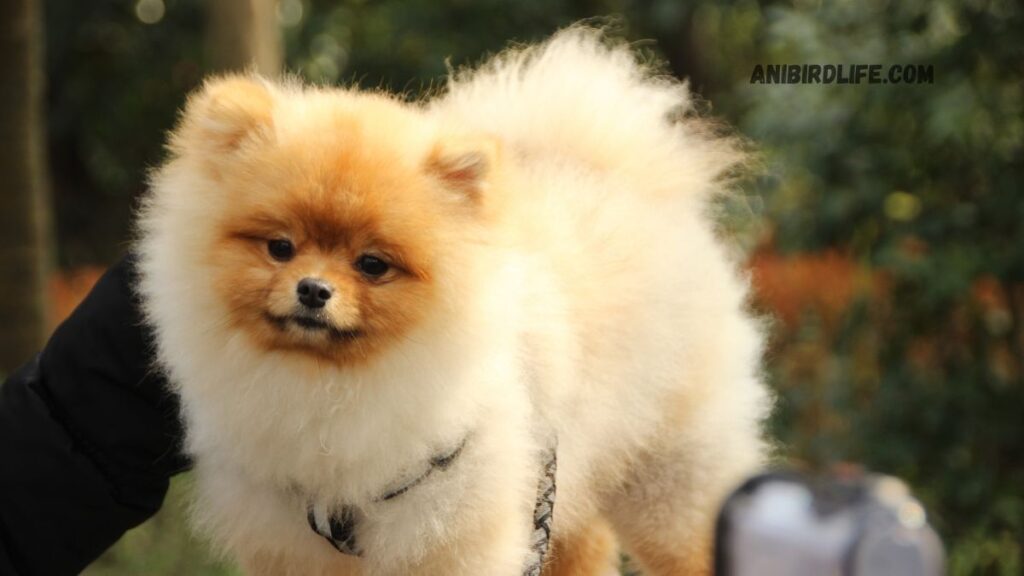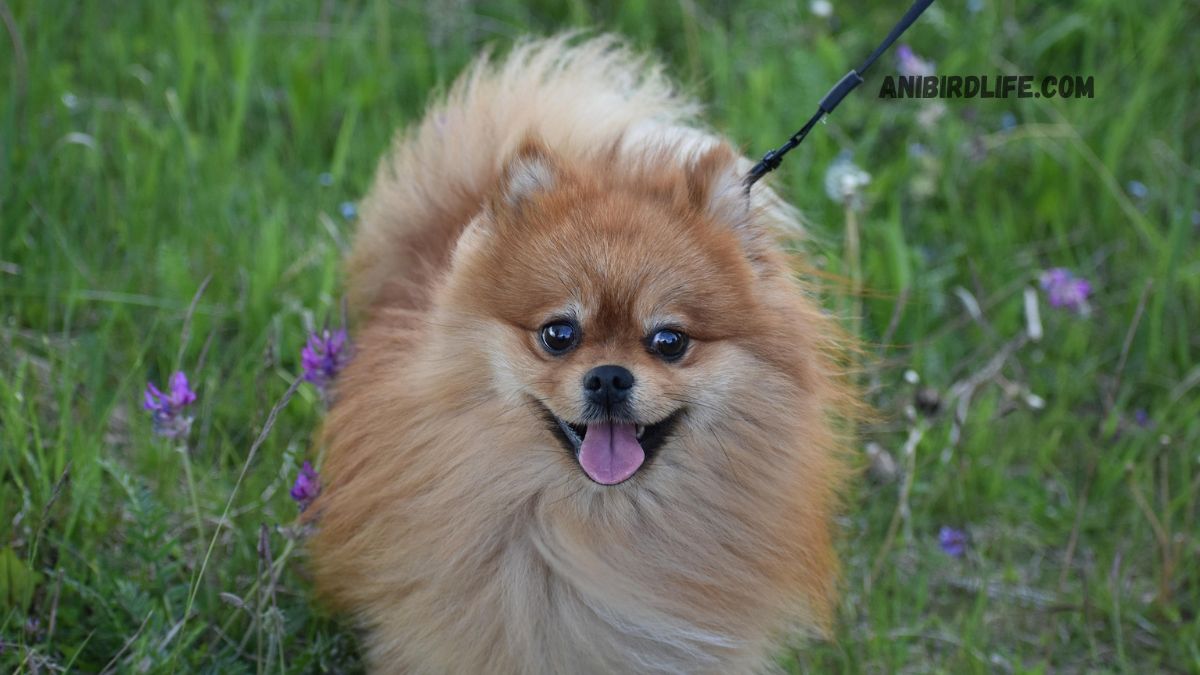The German Spitz and Pomeranian are frequently the most notable tiny, fluffy dog breeds. It’s simple to understand why these breeds are so well-liked given their opulent coats, fox-like features, and vivacious demeanor. Nevertheless, a lot of people wrongly believe they are the same breed or mix up the two. Despite certain similarities, the German Spitz and Pomeranian are two different breeds with distinctive traits.
The main distinctions between the German Spitz and the Pomeranian will be discussed in this article, along with their histories, traits, temperaments, and need for care. You will know exactly what makes these two breeds different at the end.
Overview of the Pomeranian and German Spitz
The Spitz family of dog breeds, which includes the German Spitz and Pomeranian, is distinguished by its thick double coats, curled tails, and pointed ears. Despite having a same ancestor, they have developed into different breeds with distinctive characteristics. While the Pomeranian is a smaller, more elegant breed that has become incredibly popular as a companion dog, the German Spitz is a versatile and ancient breed.
Origins and History
History of the German Spitz
With a history spanning more than 6,000 years, the German Spitz is among the oldest dog breeds in Central Europe. Originally bred as all-purpose farm dogs, they were employed for hunting, guarding, and herding. There are five different sizes available for this breed: Giant, Medium, Miniature, Klein, and Toy. The German Spitz was prized for its loyalty, intelligence, and attentiveness.
History of Pomerania
In contrast, the Pomeranian is descended from the larger German Spitz. It was bred down to a smaller size in the Pomerania region, which is today a part of Germany and Poland, hence its name. Queen Victoria of England became a fan and started breeding smaller Pomeranians, which helped the breed gain popularity in the 18th century. These days, the Pomeranian is mostly kept as a companion dog and is regarded as a toy breed.

Outward Look
German Spitz: With a height range of 12 to 15 inches and a medium weight of 18 to 29 pounds, the German Spitz is available in a number of sizes. The Pomeranian is larger than the smaller Klein and Toy breeds.
Pomeranian: Pomeranians are considerably smaller, usually weighing only 3 to 7 pounds and standing 7 to 12 inches tall.
Colors and Coat
German Spitz: This dog has a thick, two-layered coat that can be white, black, brown, orange, or cream, among other colors. They appear fluffy due to their straight fur that stands apart from their bodies.
Pomeranian: Despite having a dense double coat, Pomeranians have softer, more abundant fur. They are available in a greater variety of hues, such as parti-color, sable, orange, red, and blue.
Features of the Face
German Spitz: This breed features almond-shaped eyes, a pointed muzzle, and a face like that of a fox. They have small, erect, triangular ears.
Pomeranian: Pomeranians have a shorter nose and a more rounded, teddy bear-like face. They appear expressive due to their dark and wide eyes.
Temperament of German Spitz
This Dog is renowned for being clever, energetic, and vigilant. Their great sense of hearing makes them good watchdogs, and they are devoted to their family. These dogs can be reserved around strangers, but they get along well with kids and other pets in general.
The temperament of Pomeranian
Pomeranians are brash, inquisitive, and vivacious. They are frequently referred to as “big dogs in a small body” because of their large personalities despite their diminutive size. Although they can be suspicious of outsiders, they are loving toward their families. In addition to their loud disposition, pomeranians can bark a lot if they are not educated properly.
Upkeep and Care
Their Grooming Requirements: To avoid matting and tangling, the German Spitz has to be brushed frequently. Throughout the year, they shed somewhat, but during seasonal shifts, they shed more.
Pomeranian: Because of their long, thick coats, Pomeranians need to be brushed every day. They require regular grooming to keep their appearance because they shed a lot.
Requirements for Exercise
German Spitz: Playtime, daily walks, and cerebral stimulation are all enjoyed by this breed, which is fairly active. Although they can adapt to apartment living, they do best in homes with yards.
Pomeranian: Despite their energy and desire for frequent exercise, Pomeranians are tiny enough to live in apartments. Playing indoors and taking short walks are generally plenty.
Health Issues
German Spitz: Dental difficulties, patellar luxation, and hip dysplasia are common health problems. With an average longevity of 13 to 15 years, they are a typically healthy breed.
Pomeranian: Pomeranians are more likely to have luxating patellas, tracheal collapse, and dental problems. Their ages range from 12 to 16 years, which is comparable.
Socialization and Training
German Spitz Training Because of their intellect and desire to please, they are quite trainable. To raise a well-behaved dog, early socialization and positive reinforcement are essential. They can compete in dog sports like agility and are excellent at obedience training.
Training in Pomeranian
Despite their intelligence, Pomeranians occasionally exhibit stubbornness. Early socialization and consistent training are crucial for reducing unwanted behaviors like excessive barking. They react favorably to training techniques that are reward-based.
7. German Spitz vs. Pomeranian:
Key Differences
| Feature | German Spitz | Pomeranian |
|---|---|---|
| Size | 12-15 inches, 18-29 lbs | 7-12 inches, 3-7 lbs |
| Coat | Dense, straight, less profuse | Thick, soft, very profuse |
| Temperament | Loyal, alert, reserved | Bold, curious, vocal |
| Exercise Needs | Moderate | Moderate (but less due to size) |
| Grooming | Regular brushing | Daily brushing |
| Lifespan | 13-15 years | 12-16 years |
Frequently Asked Questions
Which breed requires less grooming?
Both breeds need frequent brushing to keep their fluffy appearance, although the German Spitz is a little easier to groom because of its less thick coat.
Do first-time dog owners do well with Pomeranians?
Although their intransigence and grooming requirements may necessitate additional patience and dedication, Pomeranians might be an excellent choice for first-time owners.
How much do German Spitz dogs bark?
Compared to Pomeranians, these dogs tend to be quieter, yet they are attentive and may bark to notify their owners.
What is the more active breed?
The German Spitz may need a little more activity because of its working dog ancestry, but both breeds are active.
Are Pomeranians and German Spitz the same breed?
They are not the same breed, that’s for sure. The Pomeranian is a smaller, more elegant breed of German Spitz, despite their shared ancestry.
Which breed is more suitable for households?
Although both breeds can be wonderful family companions, the German Spitz’s somewhat larger stature and more placid disposition would make it a better choice for households with kids.
Do they get along with other animals?
Yes, if properly socialized from an early age, both breeds can get along with other pets.
Are flats acceptable for Pomeranians?
Pomeranians’ petite stature and mild exercise requirements make them ideal for apartment living.
In conclusion
Despite their obvious similarities, the German Spitz and Pomeranian are two different breeds with distinctive traits. The Pomeranian is a small, brave, and loving friend, but the German Spitz is a versatile, devoted, and slightly larger breed. Both breeds are excellent pets, but which one you choose will rely on your choices, lifestyle, and capacity to provide for their care requirements.
A German Spitz or a Pomeranian will be a loving and energetic addition to your household, regardless of your choice.
